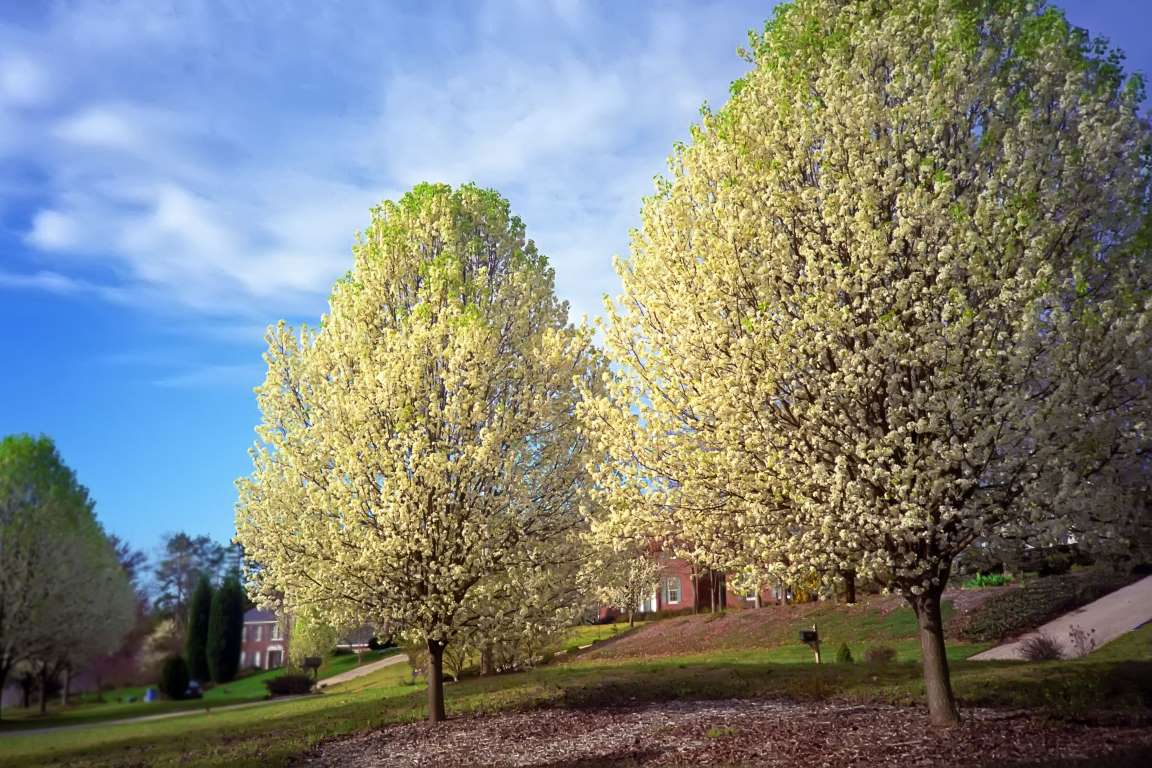
Bradford Pear
(Pyrus calleryana ‘Bradford’)
It’s impossible to compile a list of plants to avoid growing in your yard without mentioning Bradford pear. According to The Grumpy Gardener, “Bradford pear grows much bigger than people usually envision: In 20 years, it can reach 50 feet high, 40 feet wide.
Newer pears, such as ‘Chanticleer’ and ‘Trinity’, are better choices for most gardens.” Bradford pear grows to unmanageable heights very quickly (unmanageable for most gardeners and most yards—if you’re looking for a challenge, by all means, try your hand, but you’ve been warned).
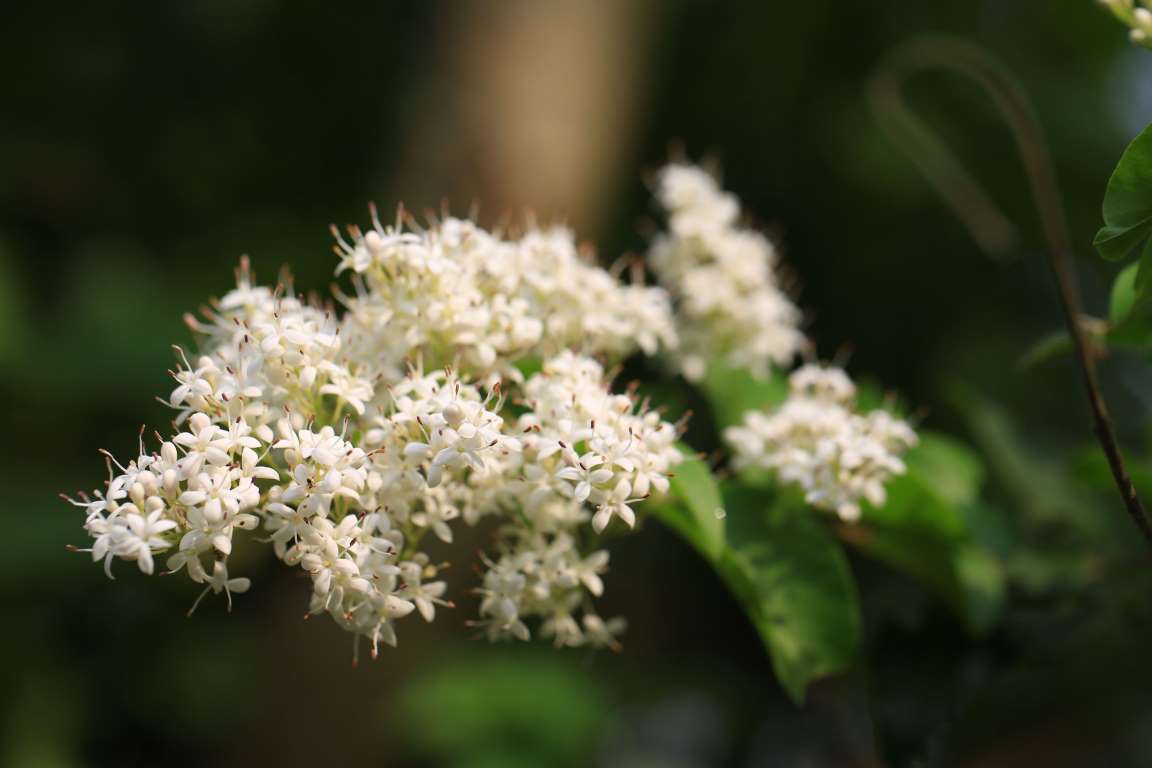
Chinese Privet
(Ligustrum sinense)
Privet is a hardy shrub that will grow in—and, if you’re not careful, take over—most any landscape. That quality makes it an effective and fast-growing hedge planting, but also a dangerous choice for yards if you’re not dedicated to keeping the plant’s growth under control.
California privet (Ligustrum ovalifolium) and the better-known Chinese privet (L. sinense) are especially difficult to keep in check and have been known to thrive—and decimate—even the most inhospitable of landscapes.
If you want to plant it and can’t be convinced otherwise, try weeping Chinese privet (L. sinense ‘Pendulum’) or variegated Chinese privet (L. sinense ‘Variegatum’) instead.
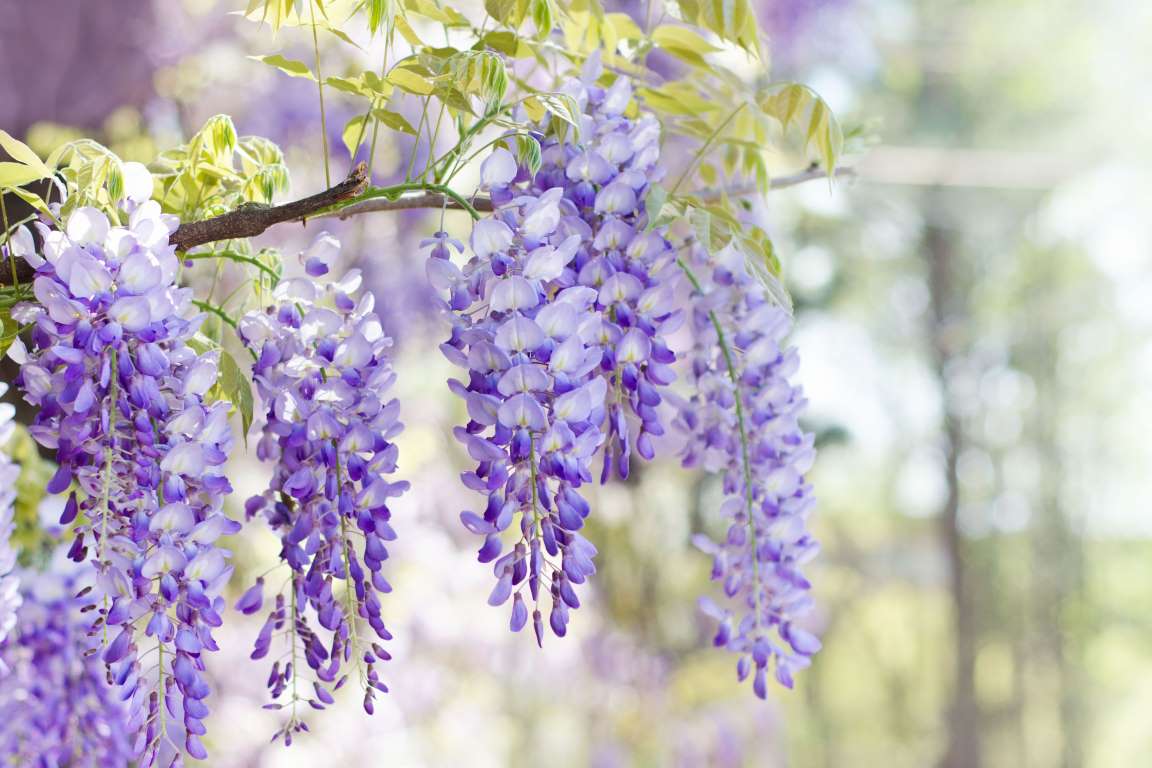
Chinese Wisteria
(Wisteria sinensis)
Wisteria is a widely loved woody vine that is fragrant and beautiful when it flowers; however, it is also a vigorous, hardy climber that typically has a very long life. Because of its aggressive spread, it is considered a nuisance planting across the region.
If you’re planning to plant wisteria—we get it, it’s gorgeous—you must also be prepared to prune it regularly and keep its growth in check before it can grow to out-of-control proportions and suffocate everything in its path.

English Ivy
(Hedera helix)
This plant, which is considered invasive in many Southern states, can cause serious problems. While it’s appreciated for its ability to cover ground quickly, this vine also climbs.
According to The Grumpy Gardener, “Aided by tenacious aerial rootlets, they climb any and every object they encounter – house, boulder, chain-link fence, wall, abandoned school bus […].”
Ivy spreads and climbs vigorously, and it’s notorious for killing trees along the way. If you catch it climbing a tree in your yard, act quickly or you’ll despair later. Also be aware of fragile plants surrounded by English ivy, because they’re especially vulnerable to the stifling effects of this hardy vine.
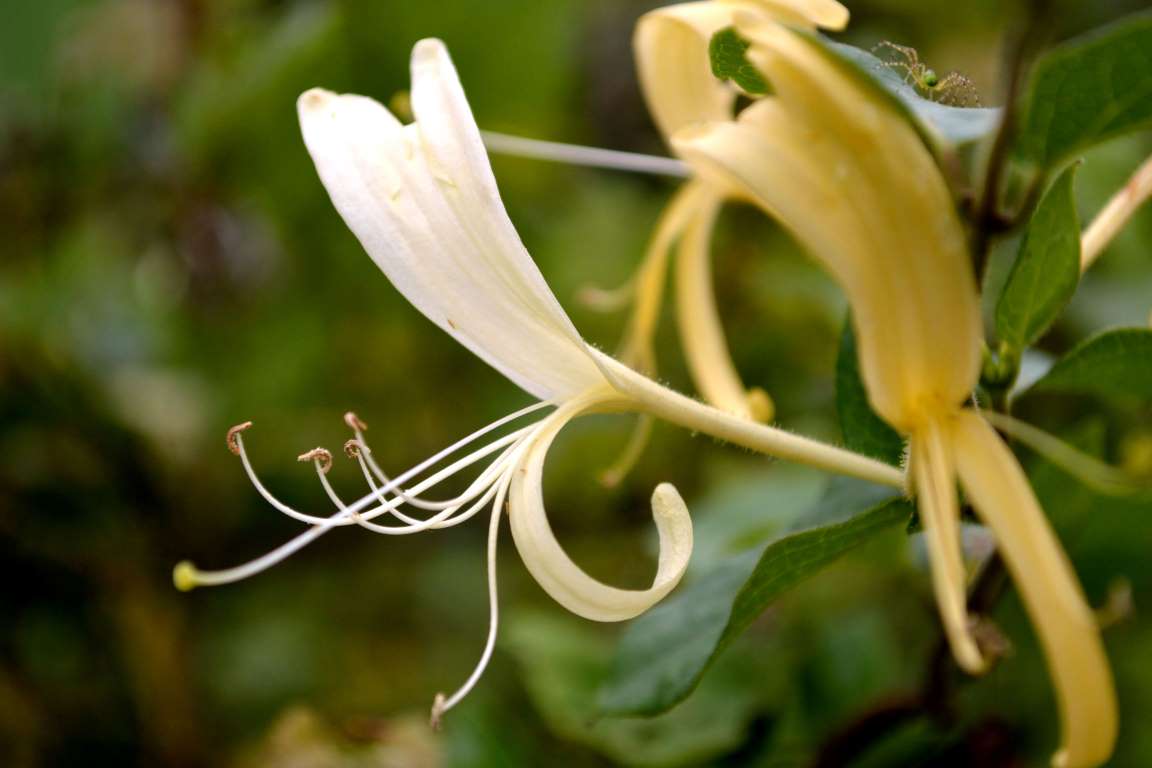
Japanese Honeysuckle
(Lonicera japonica)
We know, we know: We love it too. There’s nothing like the sweet smell of honeysuckle in summertime. But it will smother your yard.
Honeysuckle grows rapidly and requires pruning regularly, which should be done just after it has finished blooming.
Many species of honeysuckle are vigorously growing vines, but Japanese honeysuckle (L. japonica) is an especially ferocious climber. According to The New Southern Living Garden Book, it is “reviled for its invasive nature—if unchecked, it tangles its way through woodlands and throttles small trees.” Ouch.
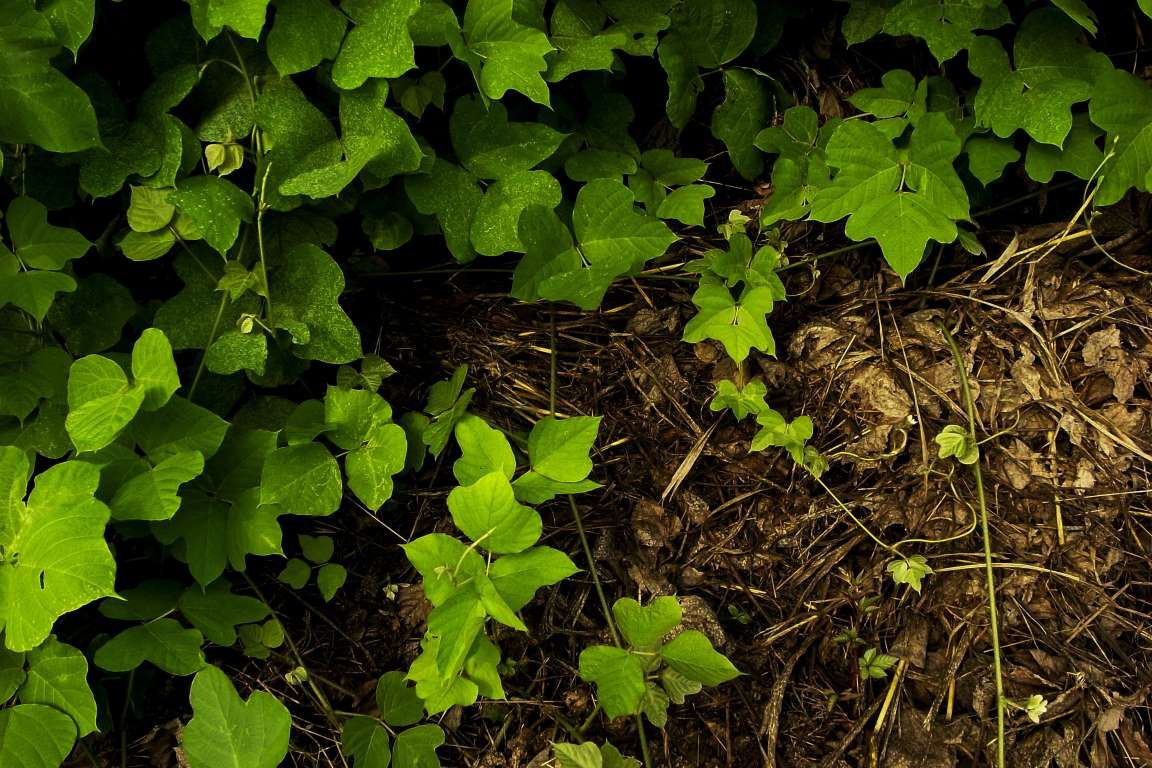
Kudzu
(Pueraria lobata)
In a list of plants that, if allowed, would undoubtedly take over your yard, you had to know we would include this notorious vine.
It’s widely known as “the vine that ate the South,” and for good reason. Invasive kudzu (which is native to Japan) sprawls across the landscape, covering anything and everything in its path. It’s unstoppable.
According to The New Southern Living Garden Book, it “smothers arbors, telephone poles, houses, and fields—and any plant in its path—at the rate of up to 1 foot per day.” That’s fast. Keep it out of your yard at all costs.
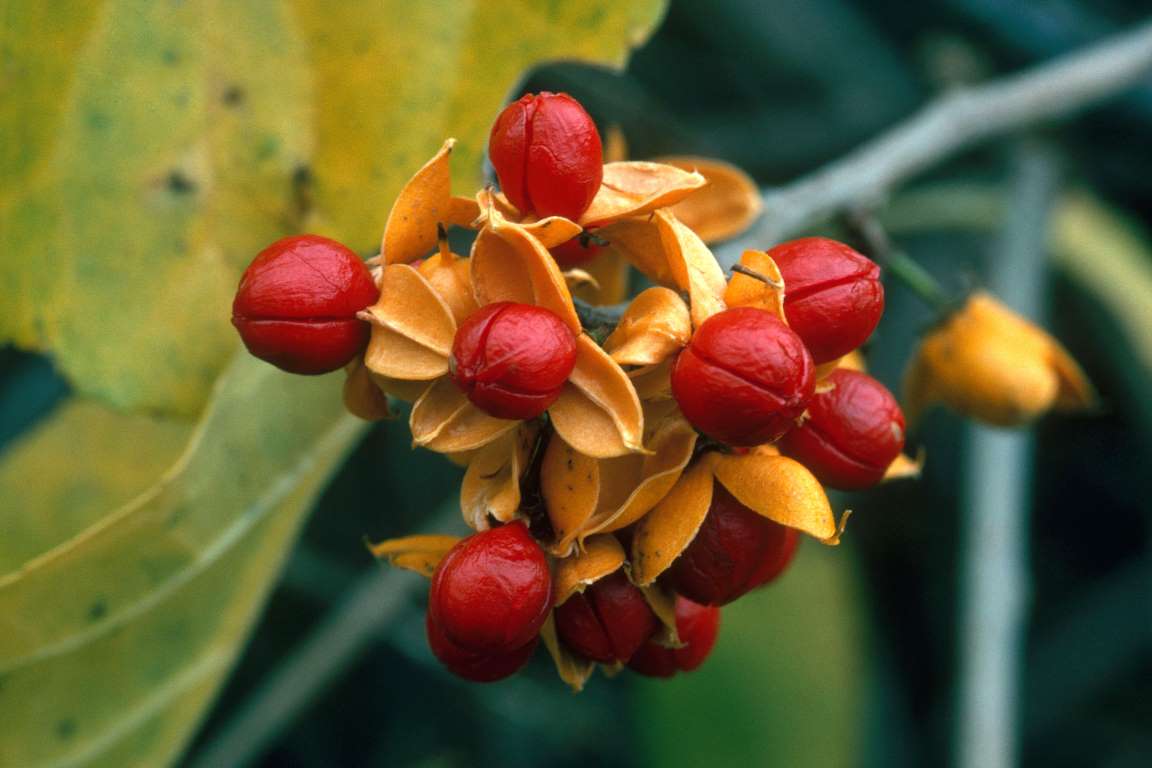
Oriental Bittersweet
(Celastrus orbiculatus)
Bittersweet spreads quickly. All it takes is one wayward seed to jumpstart a lawn overtaken by this hardy vine. According to The Grumpy Gardener, “This rampant vine does what all vines long to do—climbing, twining around, blanketing everything.
Easily growing 15 feet in a year, it can ascend to the top of a 40-foot tree and engulf all but the topmost branches. […] Entire woods and gardens are smothered.” It’s invasive growth of nightmare proportions, which is why we’ll pass on this particular plant.
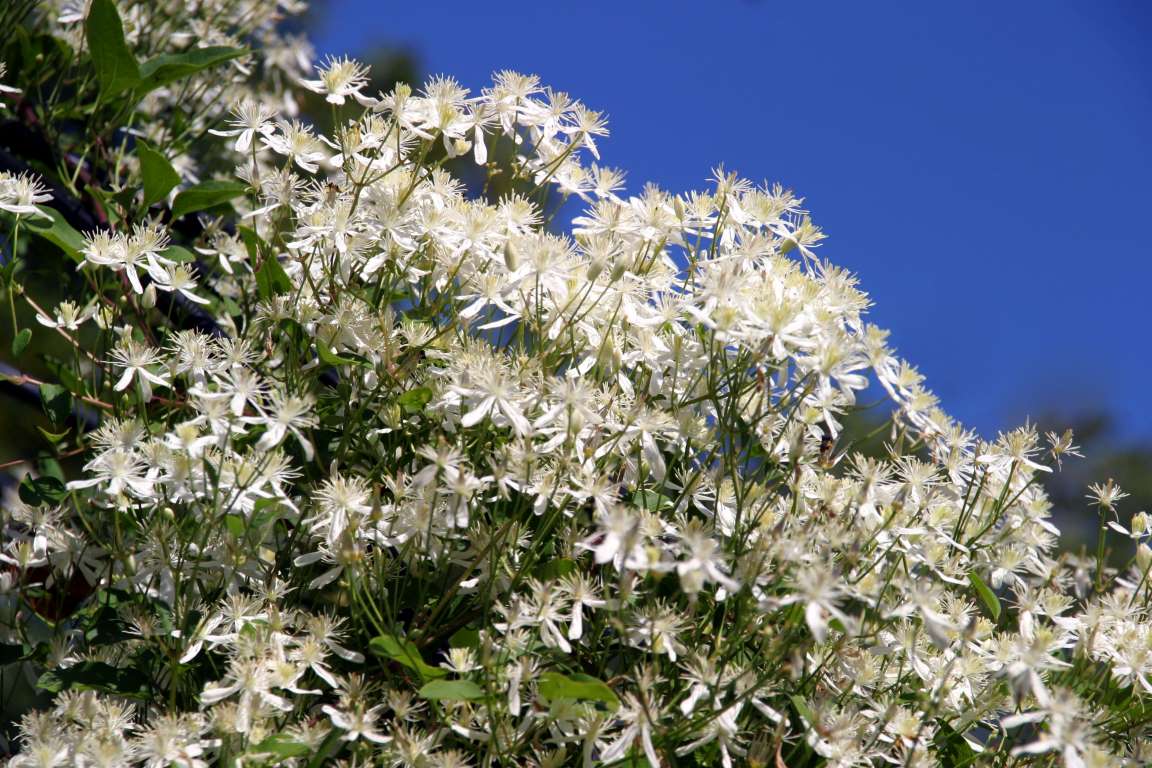
Sweet Autumn Clematis
(Clematis terniflora)
The New Southern Living Garden Book describes this deciduous vine, which is native to Japan, as “tall and vigorous (some would say rampant).”
It also notes that sweet autumn clematis makes for a “good privacy screen and arbor cover” and that it “self-sows readily and can become a pest.”
We don’t want pests in our yard, do you? If your heart is set on clematis but you don’t want to battle Clematis terniflora, then check out Armand clematis (Clematis armandii), which, with its fragrant blooms and evergreen foliage, has become a particular favorite of The Grumpy Gardener.
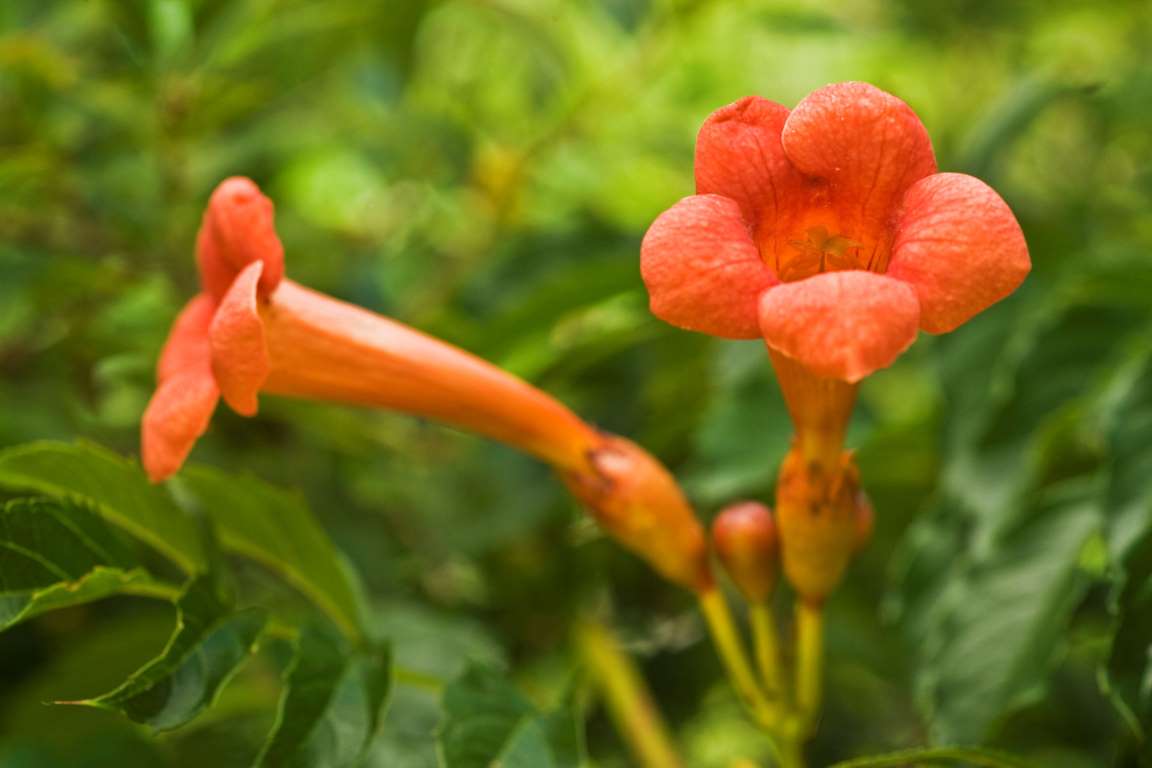
Trumpet Creeper
(Campsis radicans)
Trumpet creeper, which is also called trumpet vine, is native to the eastern United States and can be recognized by its flowers, which are unmistakable trumpet-shaped blooms in vibrant orange tones. This woody vine can grow to a large scale rather quickly, handily making its way across supporting surfaces.
However, some, such as Chinese trumpet creeper (C. grandiflora), are less vigorous than others. One of those others, which we’d recommend avoiding, is common trumpet creeper (C. radicans), an aggressive vine that will spread quickly through your garden using its aerial rootlets.

Virginia Creeper
(Parthenocissus quinquefolia)
This native vine is hardy. According to The New Southern Living Garden Book, it is a “big, vigorous vine that clings to and runs over ground, fences, trellises, arbors, [and] trees.”
While it’s favored for its fall foliage, which turns crimson in the autumn months, it will also spread quickly and ferociously across any and all surfaces.
Also beware Boston ivy (P. tricuspidata), which is even hardier and more aggressive than Virginia creeper. If you like the look of those but not their unstoppable spread, perhaps check out Silvervein creeper (P. henryana), which is less vigorous and more manageable than both Virginia creeper and Boston ivy.





























